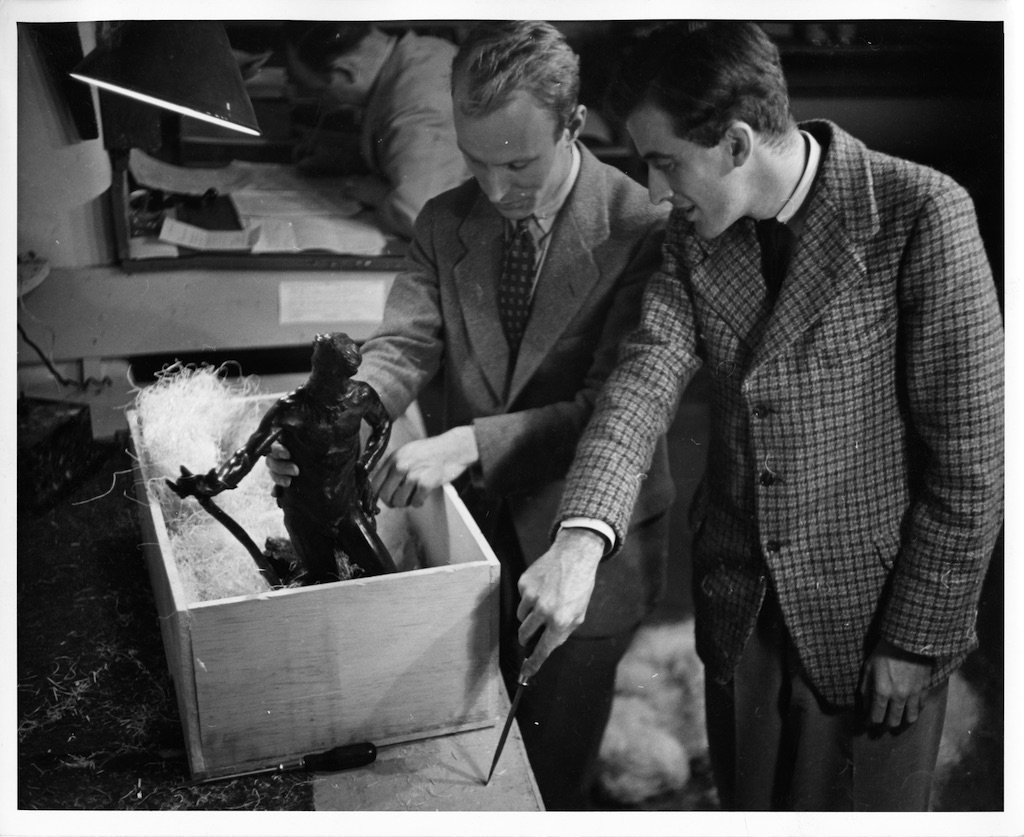[ad_1]
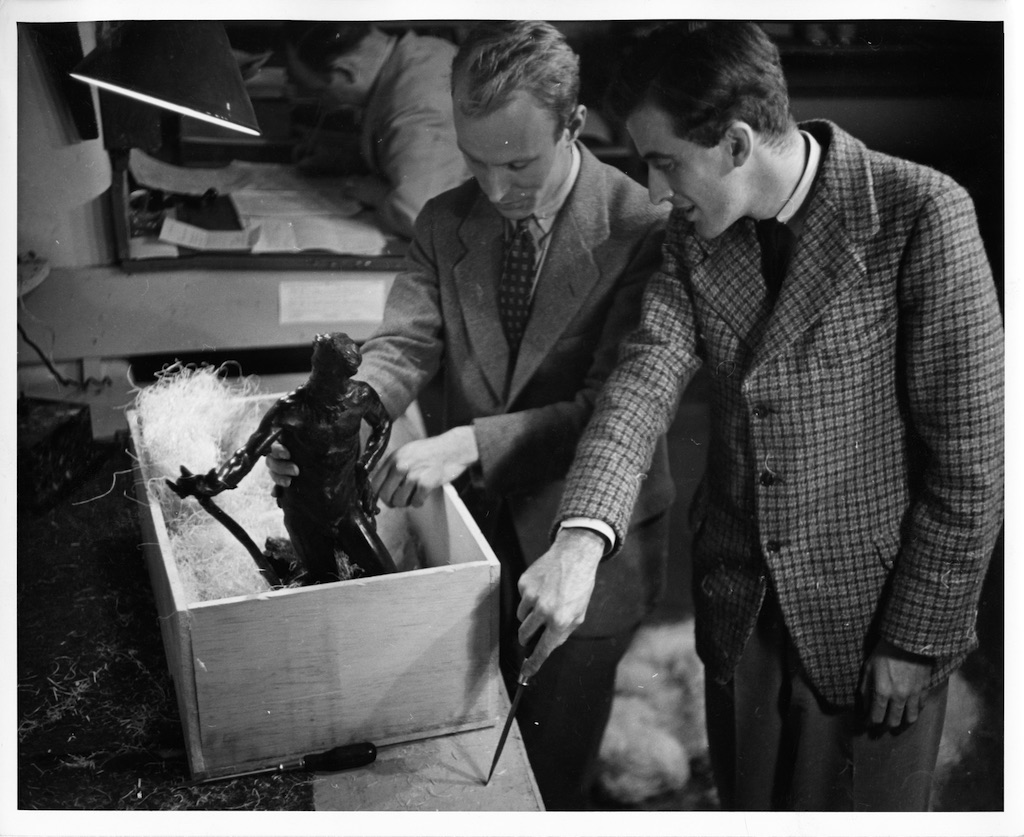
Gordon Washburn, right, who became director of the Albright-Knox Art Gallery at age 27 in 1931, and members of the Albright Art Gallery staff preparing for the 1937 exhibition “Master Bronzes, Selected from Museums and Collections in America.”
COURTESY ALBRIGHT-KNOX ART GALLERY DIGITAL ASSETS COLLECTION AND ARCHIVES
When Max Hollein was tapped last year to became director of the Metropolitan Museum of Art in New York, it marked a new milestone in a fast-rising career that has seen many of them. Hollein took his first museum job at the age of 31, in 2001, when he was hired to lead the Schirn Kunsthalle in Frankfurt, Germany. He boosted the museum’s attendance numbers and raised its public profile. Twenty years later, he is now atop the U.S. museum world.
Hollein is not alone in getting an early start in the executive director’s chair. A look back over the past century sees many key art institutions being molded by enterprising young directors. As Andrew McClellan, a professor of museum studies and art history at Tufts University, told ARTnews, “In the early decades of the 20th century, as American art museums grew in number, size, and organizational complexity, a new cadre of leaders emerged with graduate training in art history and increased readiness to meet the challenges of fiscal and collection management, donor cultivation, public educational, and scientific conservation. Before World War II many museums directors were below the age of 40.” While youthful directors have become somewhat less common in recent years—perhaps a sign of the rising professionalization of the art industry—they do still arise.
Below is a deep dive into a few of those directors’ stories, in all of their risk-taking glory, with controversies and history-altering rivalries discussed along the way. To assemble it, ARTnews consulted with Susan Cahan, dean of the Tyler School of Art at Temple University, and two museum studies professors—McClellan and Bruce Altshuler at New York University. To delimit its scope, this edition is devoted to directors of U.S. museums.
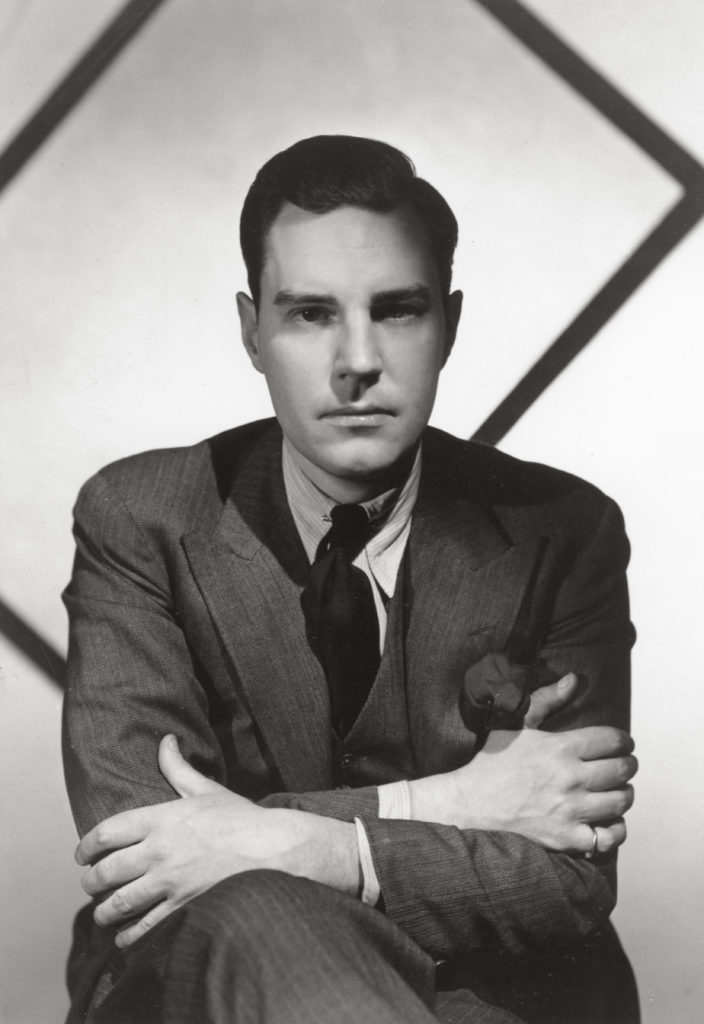
Arthur Everett “Chick” Austin Jr.
GEORGE PLATT LYNES/COURTESY WADSWORTH ATHENEUM MUSEUM OF ART
Arthur Everett “Chick” Austin Jr. – Wadsworth Atheneum Museum of Art
Hartford, Connecticut
Hired at age 26—served 1927 to 1944
The youngest museum prodigy on this list, Arthur Everett “Chick” Austin Jr. was an assistant to Edward Forbes (director of the Fogg Art Museum at Harvard University from 1909 to 1944) before he joined the Wadsworth Atheneum Museum of Art as director—a position that Forbes helped secure. During the 1930s, the Wadsworth mounted America’s first comprehensive Picasso retrospective, its first Surrealist show, and its first big Italian Baroque exhibition. Austin, who was known as “Chick” since his childhood, also redesigned the museum’s interior in the International Style, an audacious move at the time. His former home in Hartford—under the name Austin House—is a National Historic Landmark and also part of the Wadsworth’s collection.
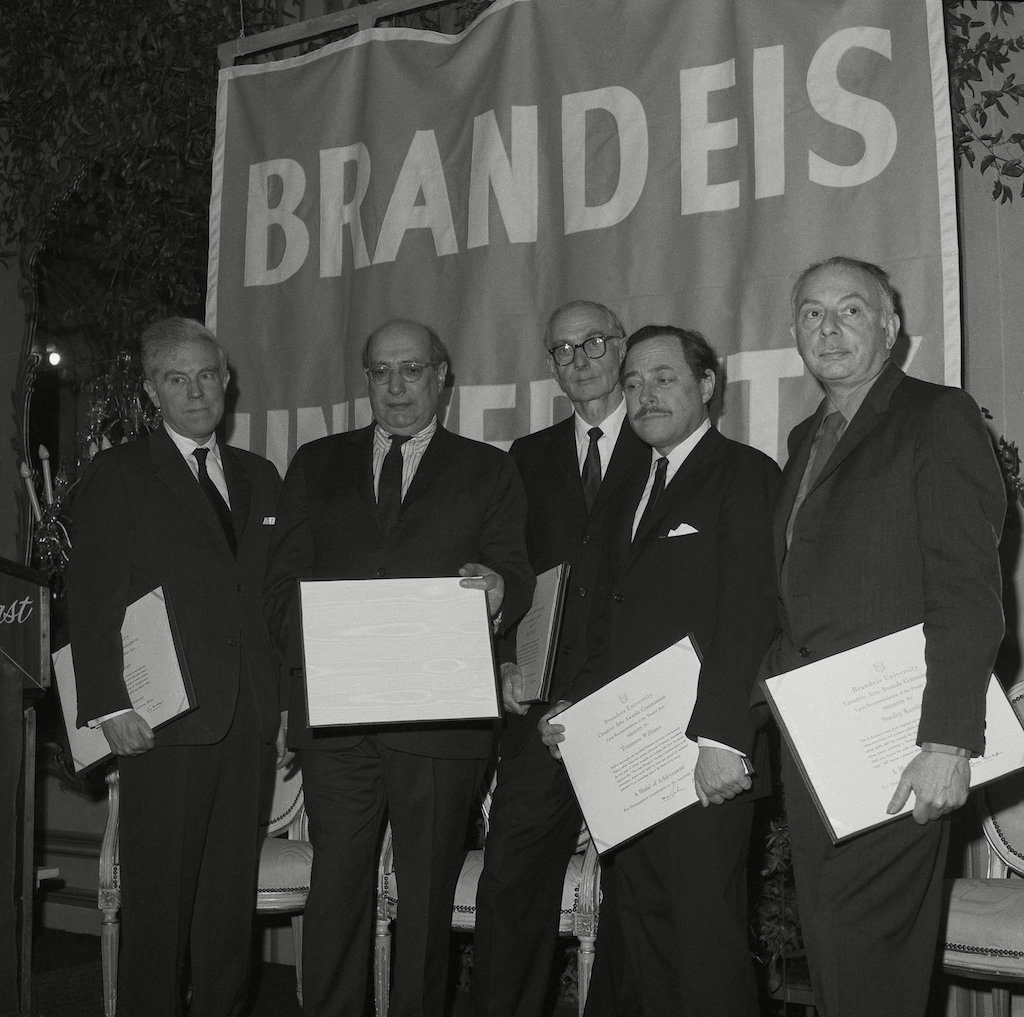
From left to right: composer Elliott Carter, painter Mark Rothko, Dr. Alfred H. Barr, Jr., director of museum collections at the Museum of Modern Art, playwright Tennessee Williams and poet Stanley Kunitz, stand with their Brandeis University 1965 Creative Arts awards.
JOHN LINDSAY/AP/SHUTTERSTOCK
Alfred Barr Jr. – Museum of Modern Art
New York
Age 27—served 1929 to 1943
After receiving his bachelor’s and master’s degrees from Princeton University, Alfred Barr Jr. taught at Harvard, Princeton, and Wellesley, where he developed the first college course in the U.S. focused solely on modern art. He went to MoMA on the recommendation of professor Paul J. Sachs of Harvard’s Fogg Museum, and during his time there, helped establish one of the premiere collections of 20th-century art in the world. Among major early acquisitions made under his watch were Picasso’s Les Demoiselles d’Avignon (1907) and Henri Rousseau’s Sleeping Gypsy (1897). But Barr also faced criticism for curatorial decisions at various points in his tenure. Shortly after his exhibition of a shoeshine stand by Joe Milone in 1942, which, according to Barr’s New York Times obituary, museum trustees considered “frivolous,” he was demoted to advisory director. He remained on staff in various capacities until 1967, when he retired from his position as director of museum collections and was elected counsellor to the trustees. A year later, Barr resigned from that post.
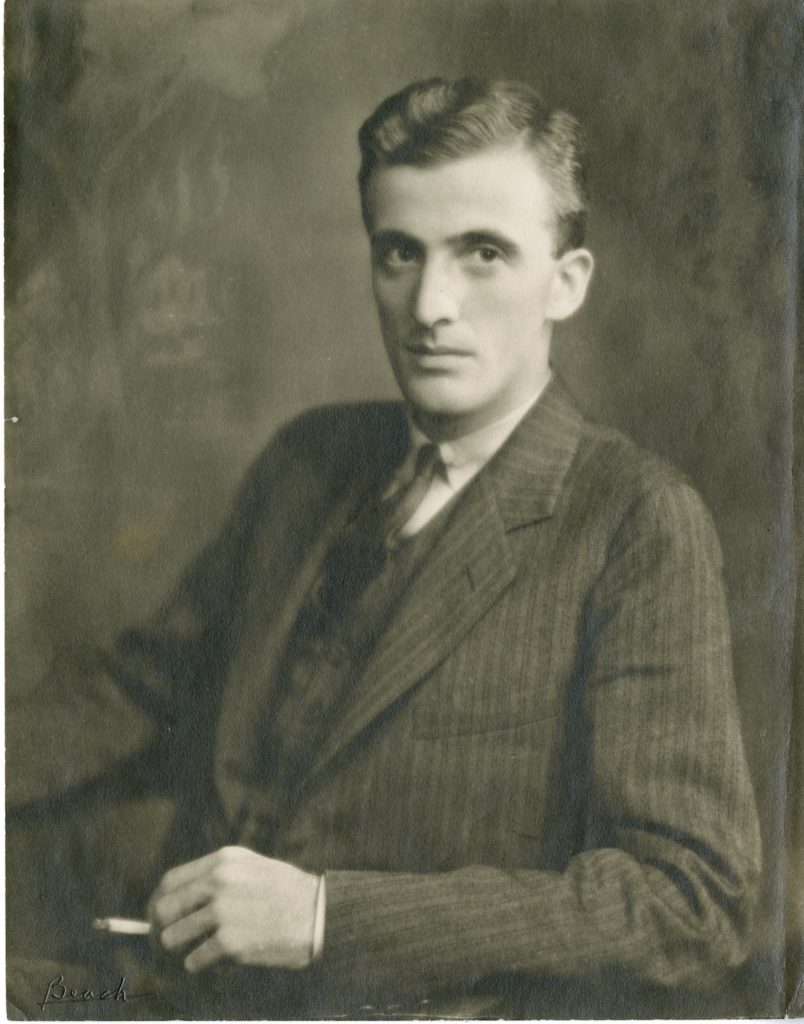
Gordon Washburn.
BEACH/COURTESY ALBRIGHT-KNOX ART GALLERY DIGITAL ASSETS COLLECTION AND ARCHIVES
Gordon Washburn – Albright-Knox Art Gallery
Buffalo, New York
Age 27—served 1931 to 1942
Soon after receiving a master’s degree from Harvard in 1930, Gordon Washburn became director of the Albright Art Gallery in Buffalo, New York. (In 1961, prior to the 1962 opening of an addition funded by prominent art patron and businessman Seymour H. Knox, Jr., the institution was renamed the Albright-Knox Art Gallery later.) When he started, Washburn was keenly aware that the Great Depression would impact the public’s engagement with cultural institutions, and he expanded the museum’s educational programming and launched new initiatives that supported art education in public schools and at the University of Buffalo. In 1938, Washburn created the museum’s Room of Contemporary Art, a space for rotating exhibitions of new art, which led to the acquisition of work by Georges Braque, Paul Klee, Henri Matisse, Amedeo Modigliani, and Chaim Soutine, among others. Washburn resigned from his post at the Albright Art Gallery in 1942 and assumed the directorship of the Rhode Island School of Design Museum in Providence. Later in his career, he worked as director of the Carnegie Institute Department of Fine Arts (now the Carnegie Museum of Art) in Pittsburgh and headed the Asia House Gallery (now called the Asia Society Museum) in New York. In 1983, his body was pulled from the East River in New York. An autopsy revealed that Washburn died by drowning; he was 78 years old.
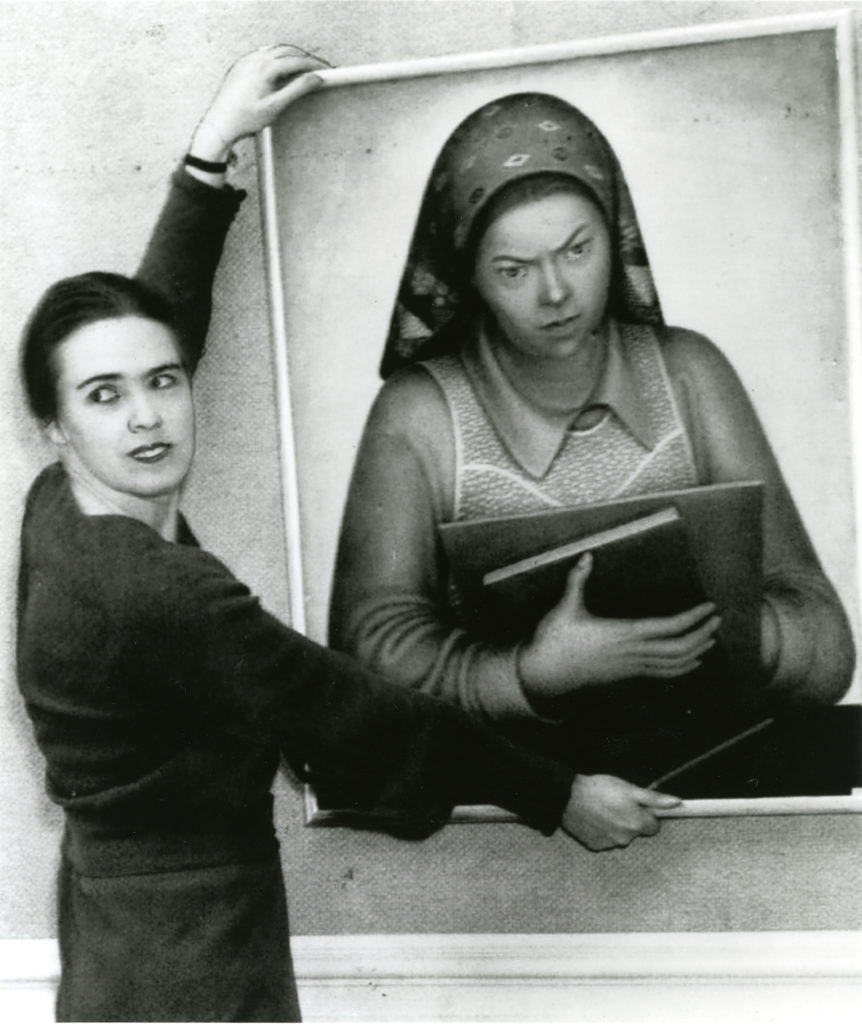
Grace McCann Morley preparing the San Francisco Museum of Art’s inaugural exhibitions of January 1935.
COURTESY SAN FRANCISCO MUSEUM OF MODERN ART ARCHIVES
Grace McCann Morley – San Francisco Museum of Modern Art
San Francisco, California
Age 34—served 1935 to 1958
Grace McCann Morley was the founder of the San Francisco Museum of Modern Art, the first cultural institution dedicated to modern art in the western United States. She was 34 years old when she established what was then known as the San Francisco Museum of Art—“Modern” would be added to the name in 1975—on the fourth floor of the War Memorial Veterans Building on Van Ness Avenue in 1935. (The museum moved to its current Third Street home, designed by the Swiss architect Mario Botta, in 1995.) The museum’s first few hundred works were gifts from the collector and patron Albert M. Bender, who eventually donated more than 1,100 objects. The museum staged the first West Coast exhibition of work by Henri Matisse, in 1936, and, in 1940, it mounted a hugely popular Picasso retrospective that included Guernica and famously culminated with some 1,300 people refusing to leave on closing night “until they had had their fill” of the masterpiece. Another milestone came in 1945, when the institution presented Jackson Pollock’s first solo show in a museum and acquired his painting Guardians of the Secret (1943). Morley retired in 1958, and she went on to direct the National Museum of New Delhi in India from 1960 to 1966. She died in New Delhi in 1985 at age 84.
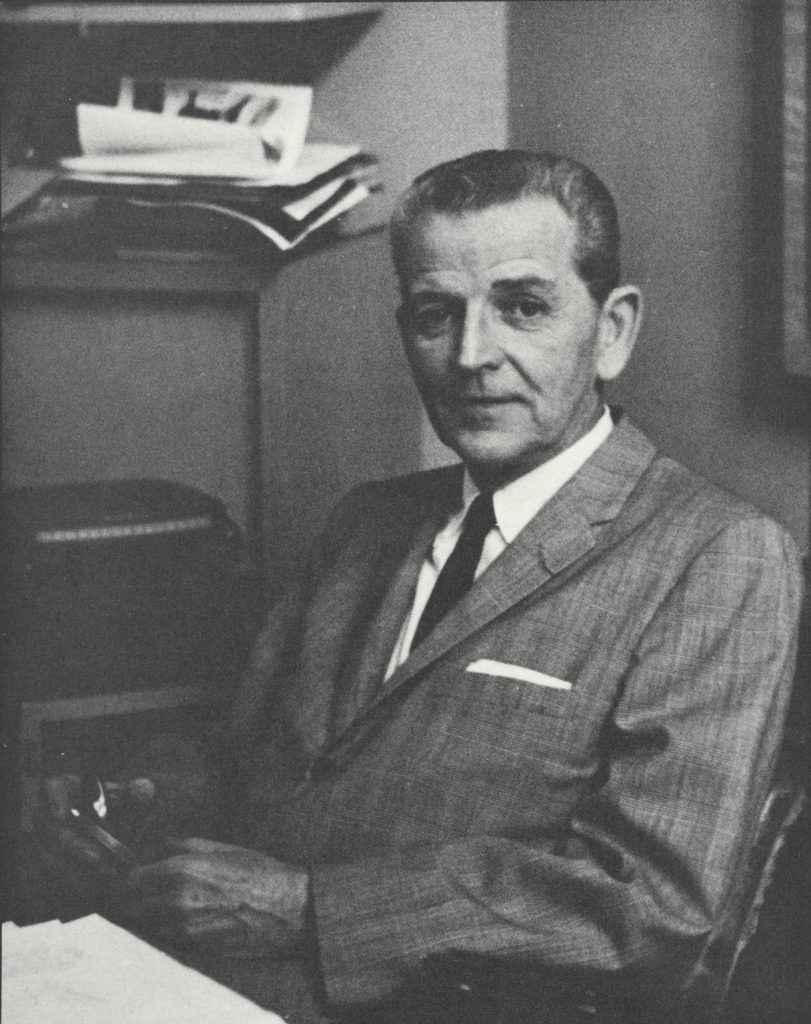
Thomas Carr Howe Jr.
COURTESY THE FINE ART MUSEUM OF SAN FRANCISCO
Thomas Carr Howe Jr. – Legion of Honor
San Francisco, California
Age 35—served 1939 to 1968
Thomas Carr Howe Jr. became assistant director of the Legion of Honor, formerly known as the California Palace of the Legion of Honor, in San Francisco in 1931 and was promoted to director eight years later. Some of his acquisitions for the museum included Rembrandt’s Portrait of a Rabbi (1657) and Lucas Cranach the Elder’s Portrait of a Lady of the Saxon Court as Judith with the Head of Holofernes (ca. 1537–40), along with works by Fragonard, Manet, Renoir, Degas, and others. As art commissioner for the 1939–40 Golden Gate International Exposition in San Francisco, he organized an exhibition of Mexican muralists. But most interesting, by many measures, was his role as chief of the U.S. Army’s Monuments, Fine Art, and Archives Section, which worked to protect historical sites from Allied bombing during World War II and later to recover Nazi-looted art. Howe’s 1946 book Salt Mines and Castles: The Discovery and Restitution of Looted European Art details his experience with the so-called Monuments Men.
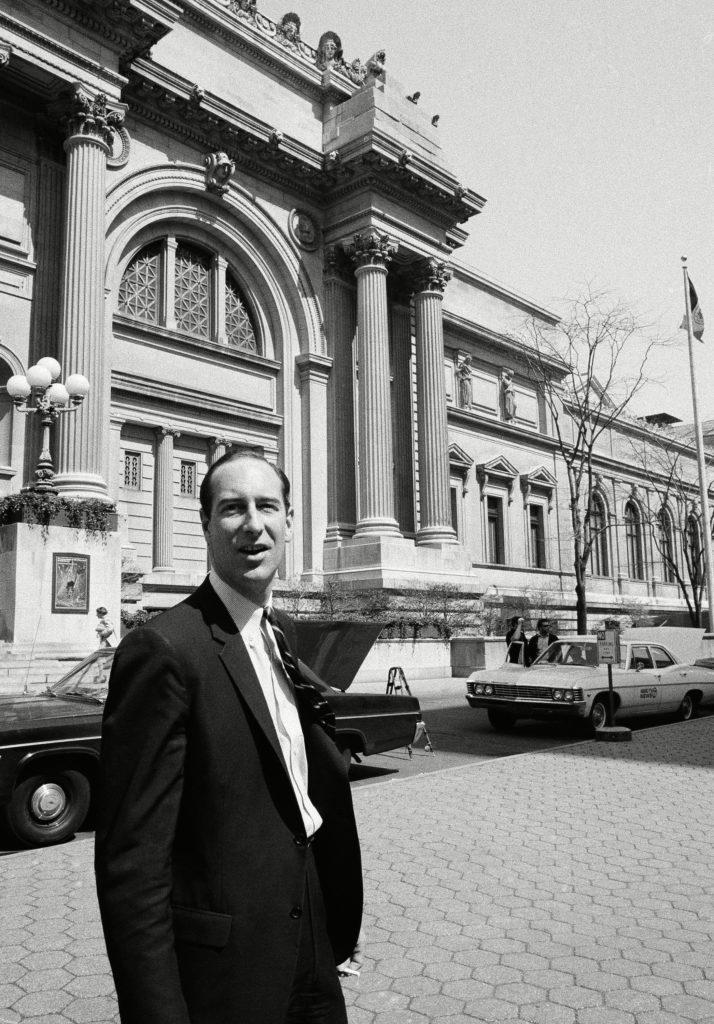
Thomas Hoving in 1967.
JOHN DURICKA/AP/SHUTTERSTOCK
Thomas Hoving – Metropolitan Museum of Art
New York
Age 35—served 1967 to 1977
As told in a famous 1967 profile in the New Yorker by John McPhee, Thomas Hoving, the seventh and youngest-ever director of the Met, began his relationship with the museum at an early age—when, as a child living in Manhattan, he harbored a fascination with the Egyptian wing and even decorated a hallway in his home in the style of a tomb. His professional entrée to the institution came in 1959 at a symposium at the Frick Collection, during which he gave a presentation on continuities between ancient sculptures housed in the National Museum in Naples, Italy, and figures in Carracci frescoes. There, Hoving met James Rorimer, then-director of the Met, and the two established a weekly lunch appointment leading up to a job when Hoving finished graduate school at Princeton. Hoving left to be New York City’s parks commissioner in 1965, but a year later, Rorimer died in his sleep at the age of 60 and Hoving was chosen as his successor. Under his watch, the Met formed its contemporary art department, was awarded the Temple of Dendur by President Lyndon B. Johnson (the monument being a gift from Egypt), opened Islamic art galleries, and established a wing for art from Africa, the Pacific Islands, and the Americas. His track record wasn’t spotless: as he confessed in his rollicking 1993 memoir Making the Mummies Dance: Inside the Metropolitan Museum of Art, Hoving had few qualms about less-than-legitimate dealings. “My collecting style was pure piracy, and I got the reputation as a shark,” he wrote. Indeed, experts said that a 2,500-year-old Greek vase that the museum purchased in 1972 for $1 million was stolen from an Etruscan tomb close to Rome, and, in 2006, it was returned to Italy.
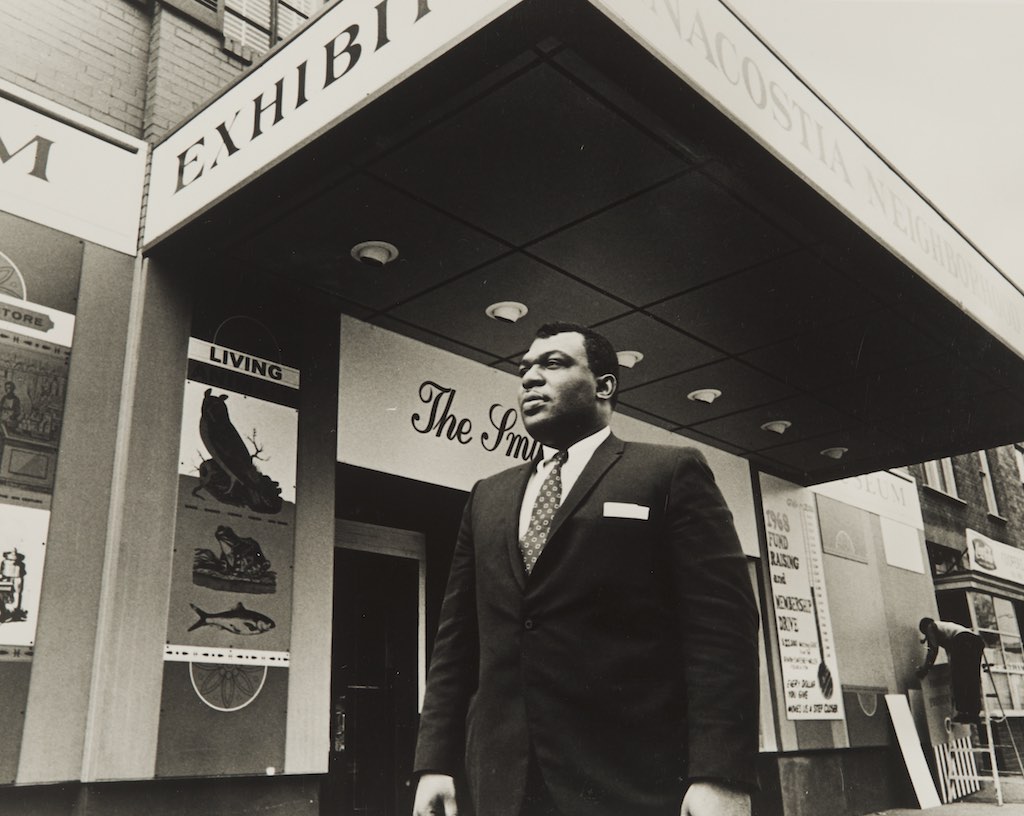
John R. Kinard in front of the Smithsonian Institution’s Anacostia Neighborhood Museum in 1968.
COURTESY ANACOSTIA COMMUNITY MUSEUM ARCHIVES, SMITHSONIAN INSTITUTION
John Kinard – Anacostia Community Museum
Washington, D.C.
Age 31—served 1967 to 1989
John Kinard, a community activist and minister, became the first black director of a Smithsonian museum when he was appointed to found what was initially called the Anacostia Neighborhood Museum, an institution conceived as “an outreach effort by the Smithsonian to the local African-American community,” in the museum’s words. “Lorton Reformatory: Beyond Time” (1970), “Frederick Douglass Years” (1978), and “The Renaissance: Black Arts of the Twenties” (1985) were a few of the exhibitions staged during Kinard’s years as director. One of his landmark presentations was “The Rat: Man’s Invited Affliction” (1969), which addressed, as Kinard put it, “the deep hatred that people who live with rats feel for all rodents.” The resulting show featured live rats, information about the history of rat-borne diseases, and, according to the Smithsonian Institution Archives, “how rat infestations as serious as Anacostia’s were not inevitable, but rather the result of political decisions.” Among Kinard’s many successes, he raised $500,000 in 1971 to create an exhibit and design laboratory to train museum professionals, and he established a research center and library, a photography lab, and a crafts center in leased buildings around Washington.
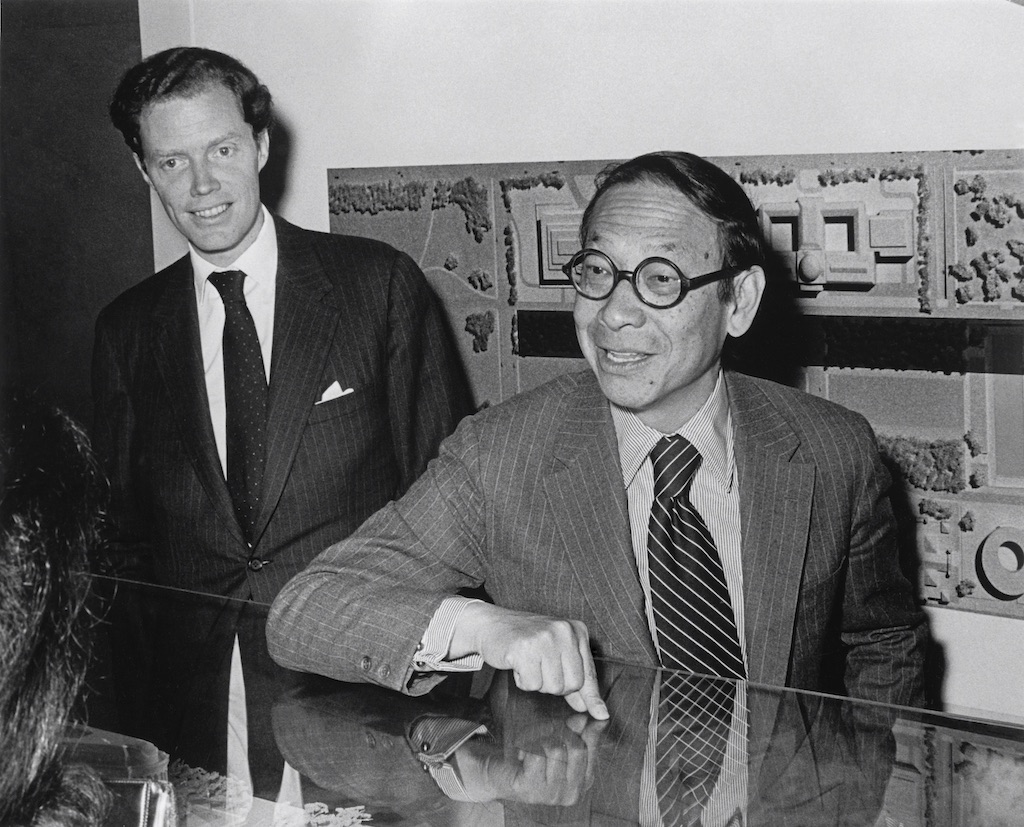
Architect I.M. Pei with J. Carter Brown at the press conference to announce East Building design plans, May 5, 1971.
COURTESY NATIONAL GALLERY OF ART, WASHINGTON, D.C., GALLERY ARCHIVES
J. Carter Brown – National Gallery of Art
Washington, D.C.
Age 34—served 1969 to 1992
Born to a wealthy Rhode Island family in 1934, John Carter Brown grew up in an 18th-century house (which would later become an American Studies center at Brown University) filled with antiques and artworks. His mother, Anne Kinsolving, was, at various points in her life, a violinist with the Baltimore Symphony, a music critic, and a scholar of military uniforms. His father, John Nicholas Brown, was named “the world’s richest baby” when, in 1900, upon the deaths of his father and uncle, he inherited his family’s fortune of $10 million. Brown got his start at the National Gallery in Washington, D.C., in 1961, when the museum’s then-director, John Walker hired him as an assistant. Brown took the helm in 1969, and the National Gallery of Art’s endowment grew from $34 million to $186 million during his tenure. Over the course of nearly three decades, he oversaw the organization of some of the NGA’s most groundbreaking exhibitions—from African sculpture to King Tut to nudes by Andrew Wyeth. In 1978 he opened the museum’s I. M. Pei–designed East Building. As Brown’s New York Times obituary noted, Thomas Hoving, director of the Metropolitan Museum of Art from 1967 to 1977, was his “archrival,” and the two frequently vied for supremacy in programming and acquisitions.
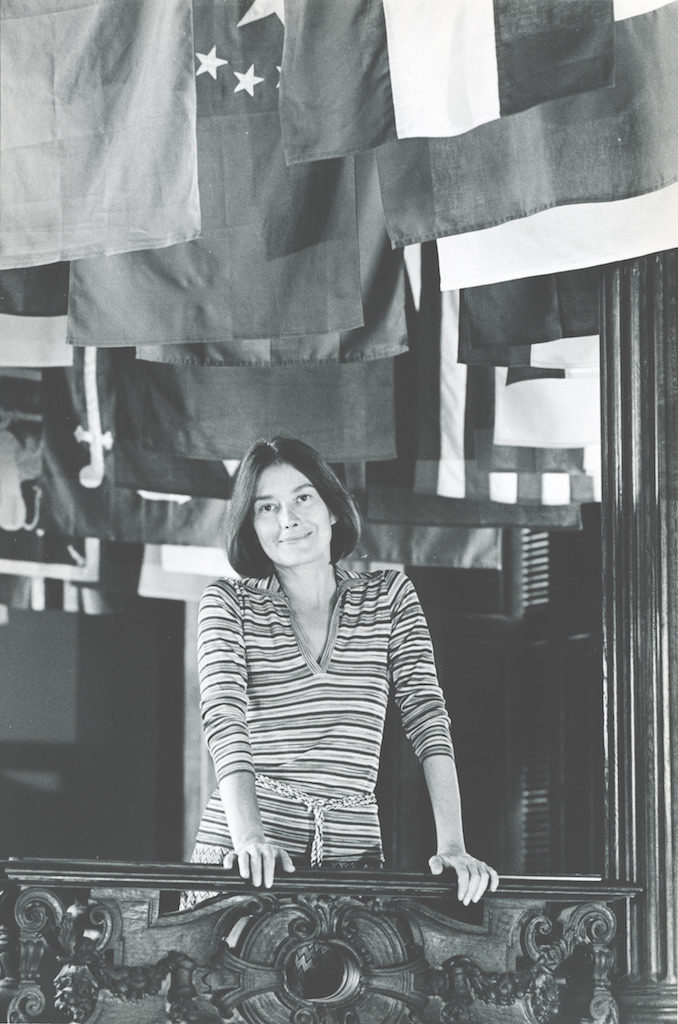
Lisa Taylor on the grand stair of the Carnegie Mansion in 1976, with a display of flags from the inaugural exhibition “MAN transFORMs.”
SMITHSONIAN INSTITUTION ARCHIVE
Lisa Taylor – Cooper-Hewitt Design Museum
New York
Age 36—served 1969 to 1987
Lisa Taylor was the daughter of an architect and a painter, and she got her start in the art world on the staff of the U.S. Commission of Fine Arts, an independent federal agency that advises the president, from 1958 to 1962. She then worked as the membership director of the Corcoran Gallery of Art in Washington, D.C., before, in 1969, becoming director of the Cooper-Hewitt Museum. She helped raise more than $6 million to renovate the museum’s home—the former mansion of Andrew Carnegie on East 91st Street in New York. (Incidentally, the first exhibition at the Cooper-Hewitt in 1976, titled “MAN transFORMs,” was curated by Max Hollein’s father, Hans.) Taylor further helped establish the annual Museum Mile Festival, which began in 1978 and continues to offer the opportunity to visit various museums along Fifth Avenue for free. When she retired from her role at the Cooper-Hewitt, Taylor edited a series of books called “Immovable Objects” that consider design in public and urban spaces.
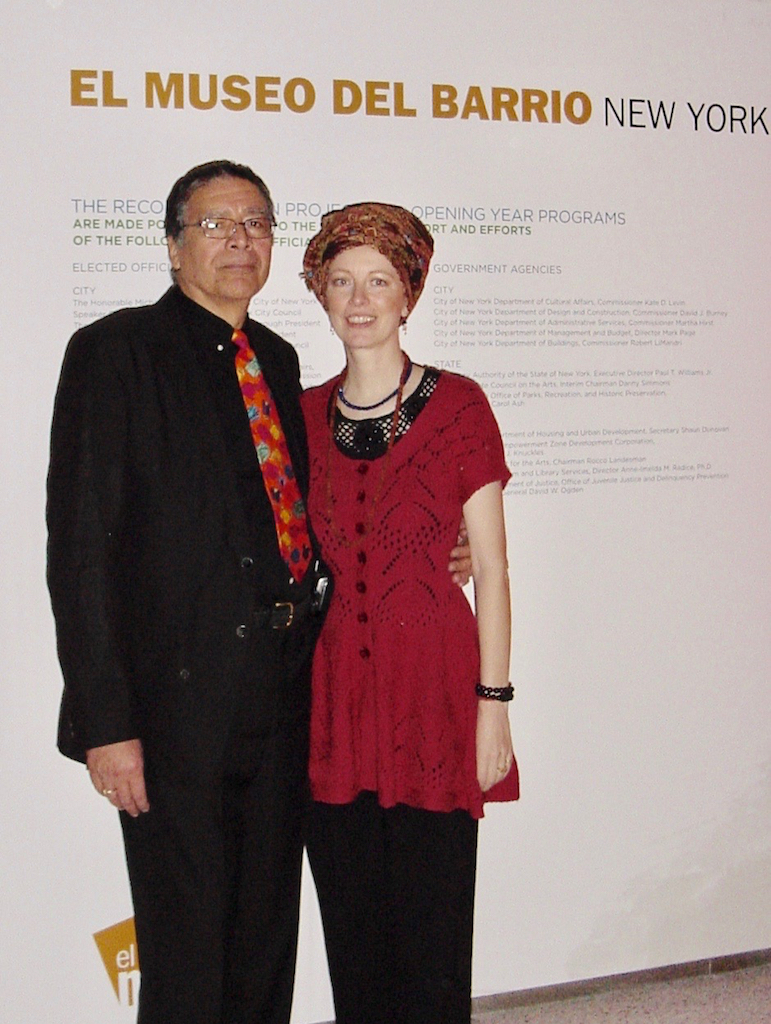
Raphael Montañez Ortiz with his wife Monique Ortiz Arndt.
COURTESY RAPHAEL MONTAÑEZ ORTIZ
Raphael Montañez Ortiz – El Museo del Barrio
New York
Age 35—served 1969 to 1971
When tasked with creating materials on Puerto Rican history, culture, and art for students in the East Harlem neighborhood of New York, Raphael Montañez Ortiz—an activist, educator, and destructivist art pioneer—ended up creating El Museo del Barrio as a resource for the local community. “To afford me and others the opportunity to establish living connections with our own culture, I founded Museo del Barrio,” he once said. The museum began running out of PS125 at 425 West 123rd Street, and, in its first years of existence, would stage programming in nearby brownstones and storefronts. Early exhibitions included “The Art of Needlework” (1970), with knitting, crochet, and embroidery on view, and a show of Puerto Rican paintings and graphics, with contributions from Osiris Delgado, Victor Linares, Miguel Pou, and others.
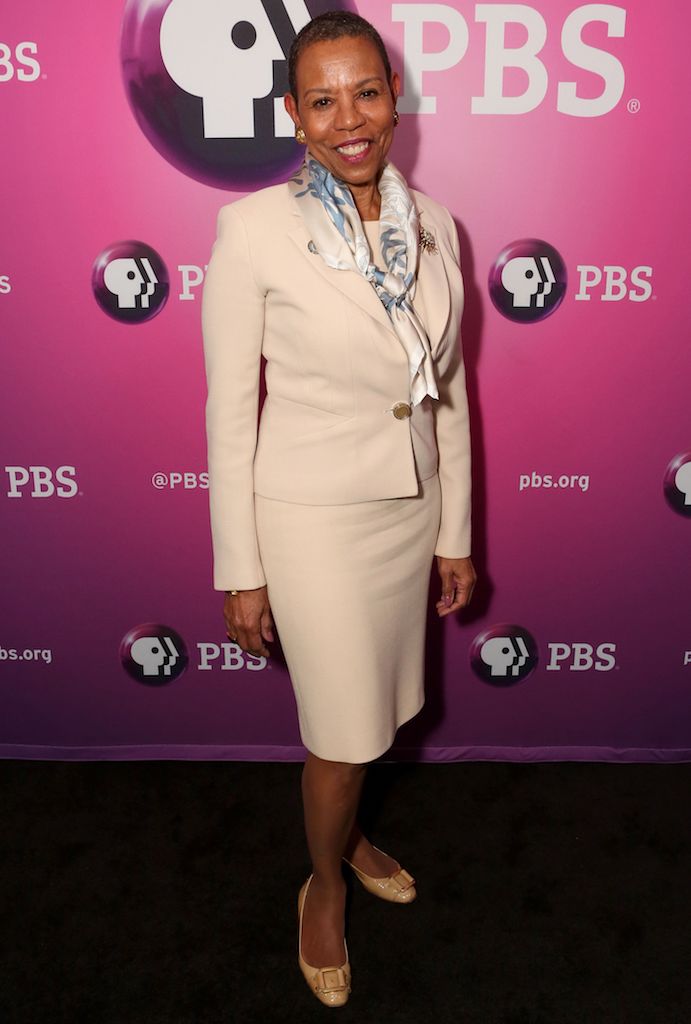
Mary Schmidt Campbell.
DAVID BUCHAN/VARIETY/SHUTTERSTOCK
Mary Schmidt Campbell – The Studio Museum in Harlem
New York
Age 29—served 1977 to 1988
Before her 11 year-tenure as director of the Studio Museum, Mary Schmidt Campbell worked as a guest curator and later assistant curator at the Everson Museum of Fine Arts in Syracuse, New York. She also cofounded the Community Folk Art Gallery, which has since become a permanent fixture within Syracuse University, where Campbell earned her master’s degree and Ph.D. During her years at the helm of the Studio Museum, the institution moved from an 8,700-square-foot loft space at 2033 Fifth Avenue to 144 West 125th Street, which was formerly the New York Bank for Savings. It became the first accredited museum devoted to black art under her leadership, and some of the major exhibitions staged during her time as director include “Tradition and Conflict: Images of a Turbulent Decade 1963-1973” (1985) and “Ritual and Myth: A Survey of African-American Art” (1982). In 1987, Campbell took up the role of New York City’s cultural affairs commissioner, and in 1991 she became dean of NYU’s Tisch School of the Arts. In 2009, Barack Obama appointed her vice chair of the President’s Committee on the Arts and Humanities, and, since 2015, she has been president of Spelman College in Atlanta. She received the Hooks National Book Award for her book An American Odyssey: The Life and Work of Romare Bearden, which was published in 2018.
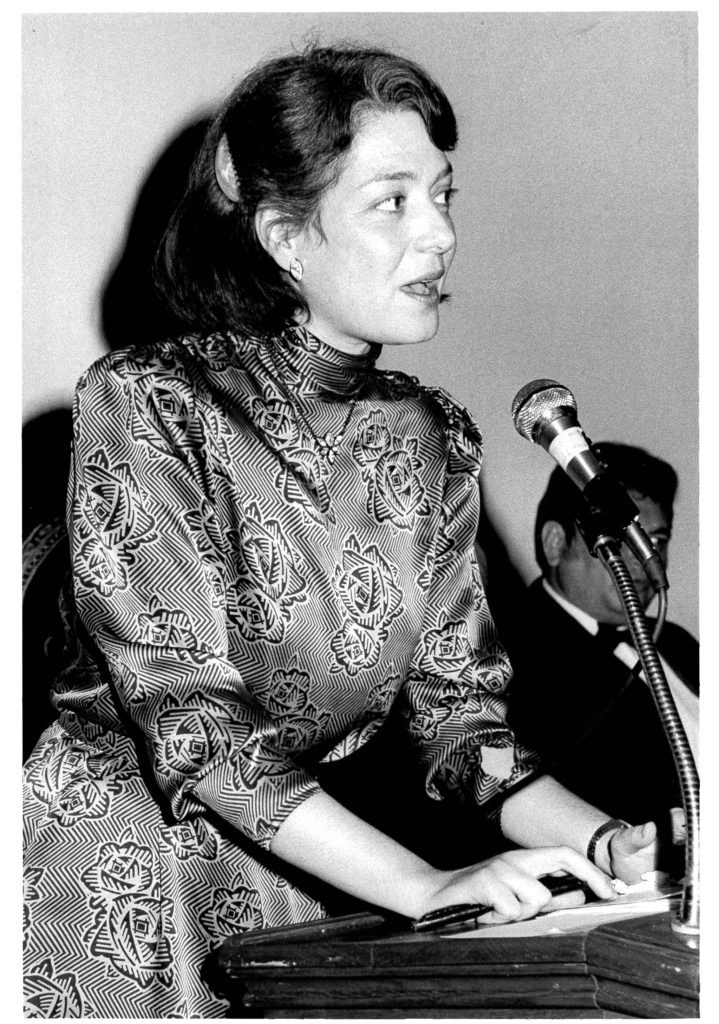
Joan Rosenbaum in 1984.
COURTESY JEWISH MUSEUM
Joan Rosenbaum – Jewish Museum
New York
Age 37—served 1981 to 2011
Joan Rosenbaum worked as a curatorial assistant in MoMA’s drawing and prints department and as director of the museum program at the New York State Council on the Arts before taking the top job at the Jewish Museum on New York’s Upper East Side. The institution’s collection grew from 15,000 to 26,000 objects under her management, and she established an endowment that grew to more than $92 million during her tenure. When she retired in 2011, she had served longer than any director of the Jewish Museum, and on the occasion of her leaving, Joshua Nash, the museum’s board chair, said, “Joan Rosenbaum is the most influential leader this institution has had in its 106-year history.”

Glenn Lowry.
PETER ROSS
Glenn Lowry – Muscarelle Museum of Art
Williamsburg, Virginia
Age 28—served 1982 to 1984
Before taking the helm of MoMA, Glenn Lowry was the first director of the Muscarelle Museum of Art at the College of William & Mary in Williamsburg, Virginia. He oversaw the construction of the institution, whose collection includes 17th- and 18th-century portraiture, works of German Expressionism, prints and drawings from the 15th to 21st century, and more. Between 1984 and 1990, he was curator of Near Eastern Art at the Freer and Sackler Galleries of the Smithsonian Institution in Washington, D.C., and led the Art Gallery of Ontario from 1990 to 1995. Having joined MoMA in 1995, Lowry has overseen two major expansions at the storied museum—the first, in 2004, yielded an expanded and renovated new building, and the second, scheduled to be completed next month, will add over 40,000 square feet of gallery space, an updated lobby, and a reorganization of collections, which, as the Times put it, “represent an effort to open up MoMA and break down the boundaries defined by its founder, Alfred Barr.”
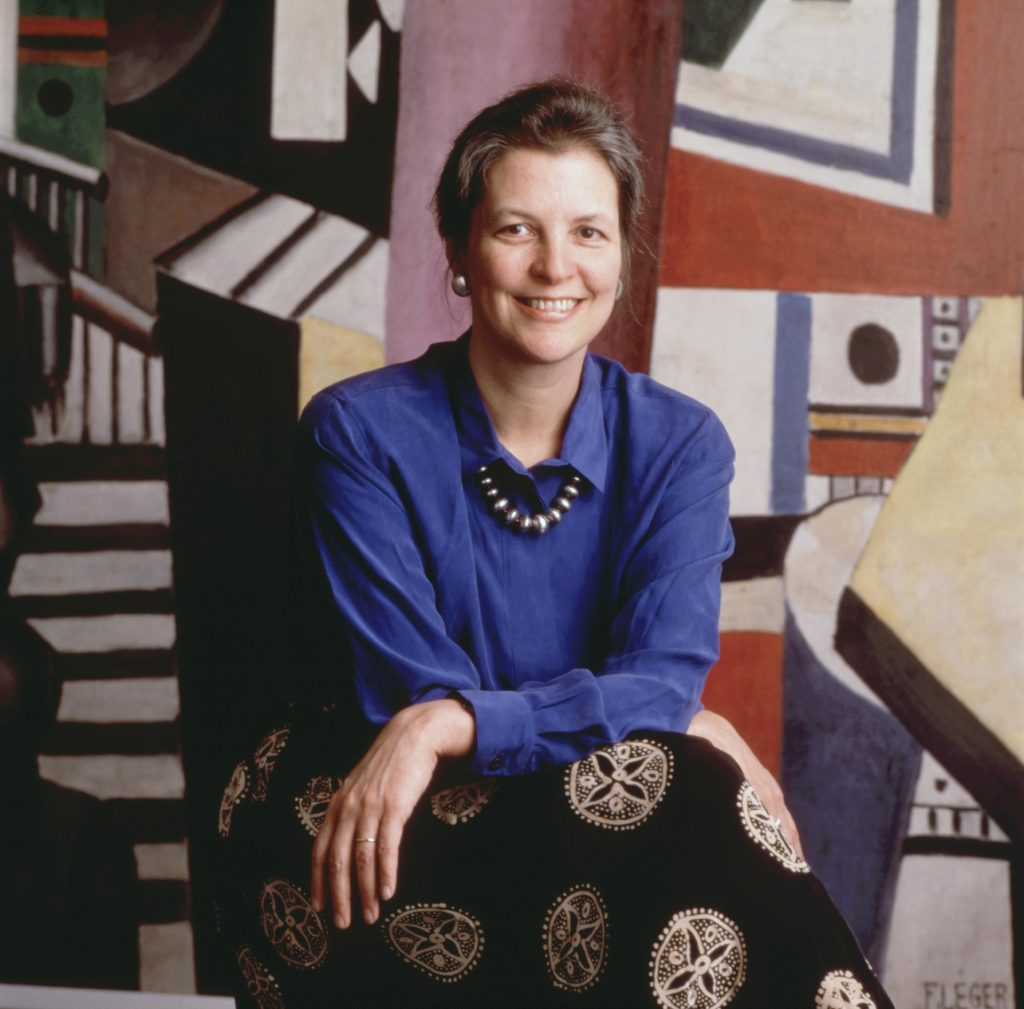
Anne d’Harnoncourt in front of Fernand Leger’s The City in 1993.
COURTESY PHILADELPHIA MUSEUM OF ART
Anne d’Harnoncourt – Philadelphia Museum of Art
Philadelphia, Pennsylvania
Age 38—served 1982 to 2008
Anne d’Harnoncourt had museum-directing skills in her blood. The only child of René d’Harnoncourt, who succeeded Alfred Barr Jr. as director of MoMA, she began her career as a curatorial assistant in the Philadelphia Museum of Art’s painting department, and later took up the post of curator of 20th-century art. She oversaw retrospectives for Brancusi and Cézanne, and helped acquire key contemporary works by the likes of Jasper Johns, Brice Marden, and Agnes Martin. Additionally, she modernized the museum by overseeing the renovation of 20 of its galleries for modern and contemporary art. Dinitia Smith, a culture reporter for the New York Times, once wrote that d’Harnoncourt had “the no-nonsense appearance of a girls’ hockey team captain.” At the time of her death, Philippe de Montebello, then-director of the Met, described her as “a guiding light of the museum community.”
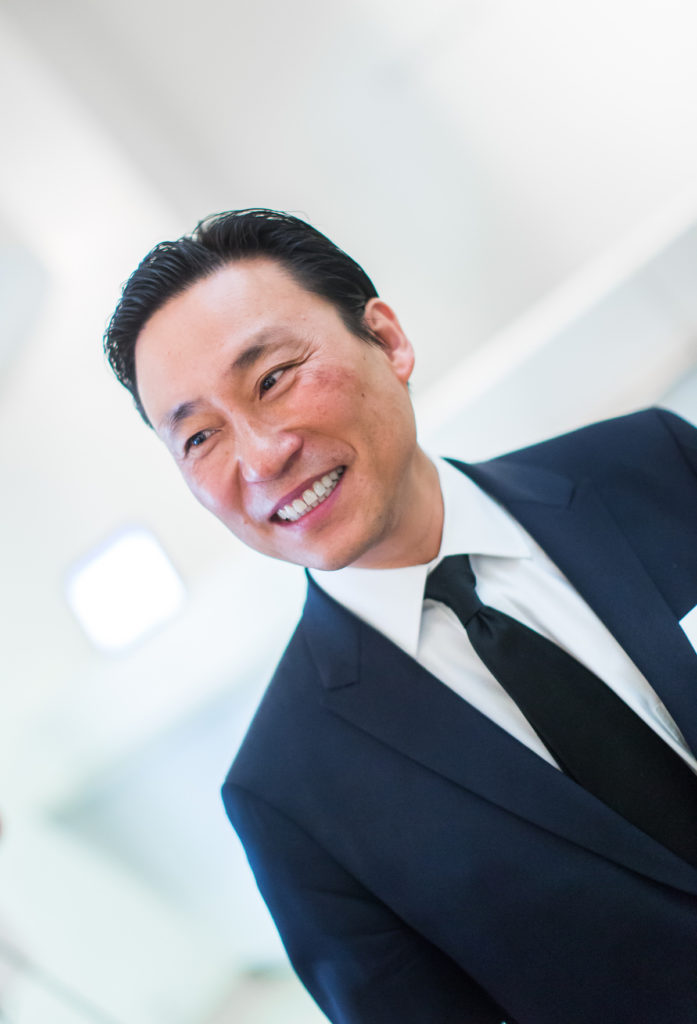
Paul Ha.
© 2014 SCOTT RUDD
Paul Ha – White Columns
New York
Age 30—served 1993 to 2001
As director of White Columns, a nonprofit space founded in 1970 by a group of artists in SoHo, Paul Ha oversaw a significant move to the border of the West Village and Meatpacking District in 1998. He gave exhibitions to Sarah Sze, Christoph Büchel, Anna Gaskell, Dana Hoey, and Aida Ruilova, and left in 2001 to be deputy director of programs and external affairs at the Yale University Art Gallery in New Haven. He went on to become director of the Contemporary Art Museum St. Louis, and he is currently director of the List Visual Arts Center at MIT in Cambridge.
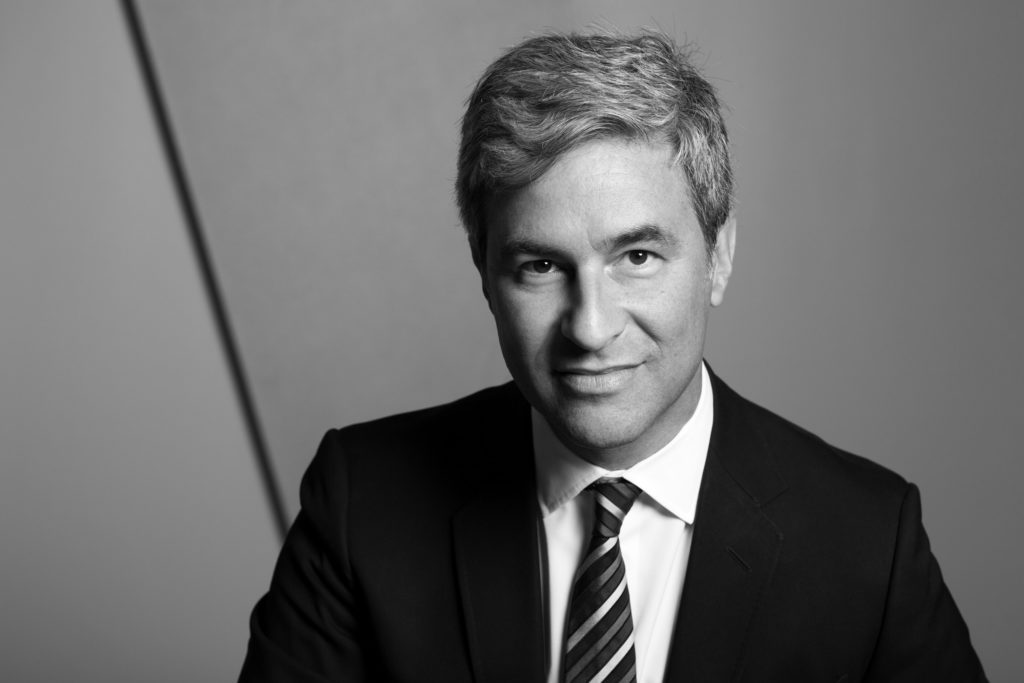
Michael Govan.
© BRIGITTE LACOMBE
Michael Govan – Dia Art Foundation
New York
Age 30—served 1994 to 2006
After working as the deputy director of the Guggenheim Museum in New York starting at the age of 25, Michael Govan became the leader of Dia Art Foundation in 1994. He worked to revitalize the ’70s-era bastion of Minimalism and Conceptualism at the Dia Center for the Arts in Manhattan as well as far-flung outposts like The Lightning Field in New Mexico. Most notably, in 2003 he opened Dia:Beacon in a former factory in upstate New York with help from the collector and patron Leonard Riggio. Since 2006, Govan has been director of the Los Angeles County Museum of Art, where he is working on a reimagining of LACMA’s campus designed by architect Peter Zumthor plus an expansion into satellite spaces in South Los Angeles.
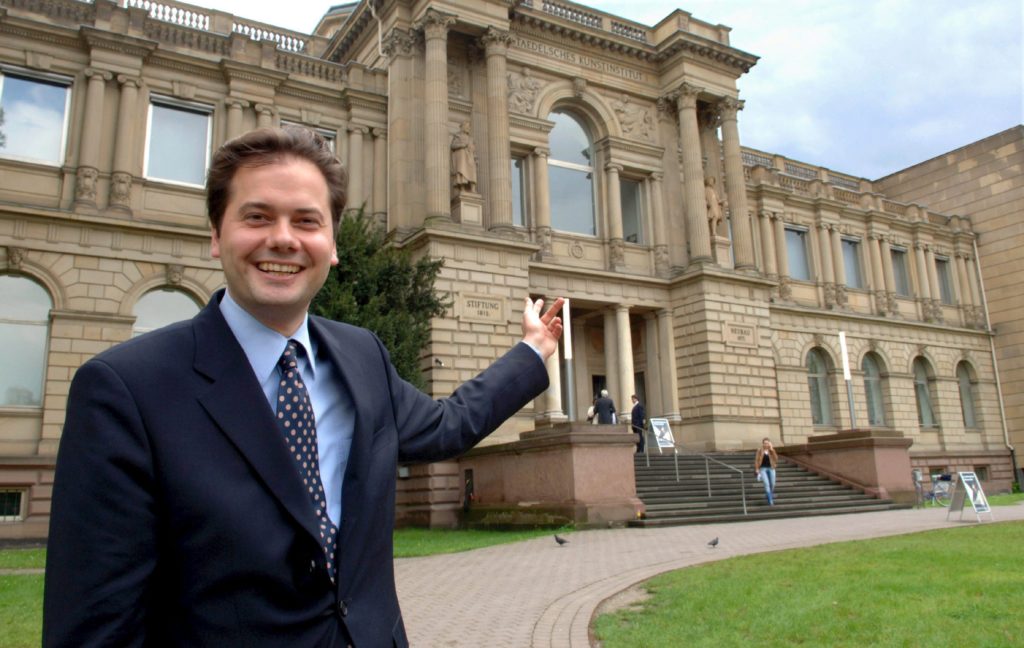
Max Hollein at the Staedel Art Institute in Frankfurt Germany in 2005.
CHRISTINE KOKOT/EPA/SHUTTERSTOCK
Max Hollein – Schirn Kunsthalle
Frankfurt, Germany
Age 31—served 2001 to 2016
Max Hollein, recently appointed as the tenth director of the Metropolitan Museum of Art, was 31 years old when he became director of the Schirn Kunsthalle in Frankfurt. One of his most significant curatorial projects at that institution was the 2002 exhibition “Shopping: A Century of Art and Consumer Culture,” for which a Barbara Kruger work was shown on the the Galeria Kaufhof, a department store in Frankfurt. In his first years at the Schirn Kunsthalle he hosted shows of Yves Klein and Pablo Picasso, and increased attendance figures significantly. A few years later, Hollein would simultaneously helm the Schirn Kunsthalle, the Städel museum (where he raised $69 million for construction and renovations), and the Liebieghaus sculpture museum. In 2016, he joined the Fine Arts Museums of San Francisco as director, with acquisitions from the Souls Grown Deep Foundation and the 2017 exhibition “Teotihuacan: City of Water, City of Fire” among his accomplishments there.
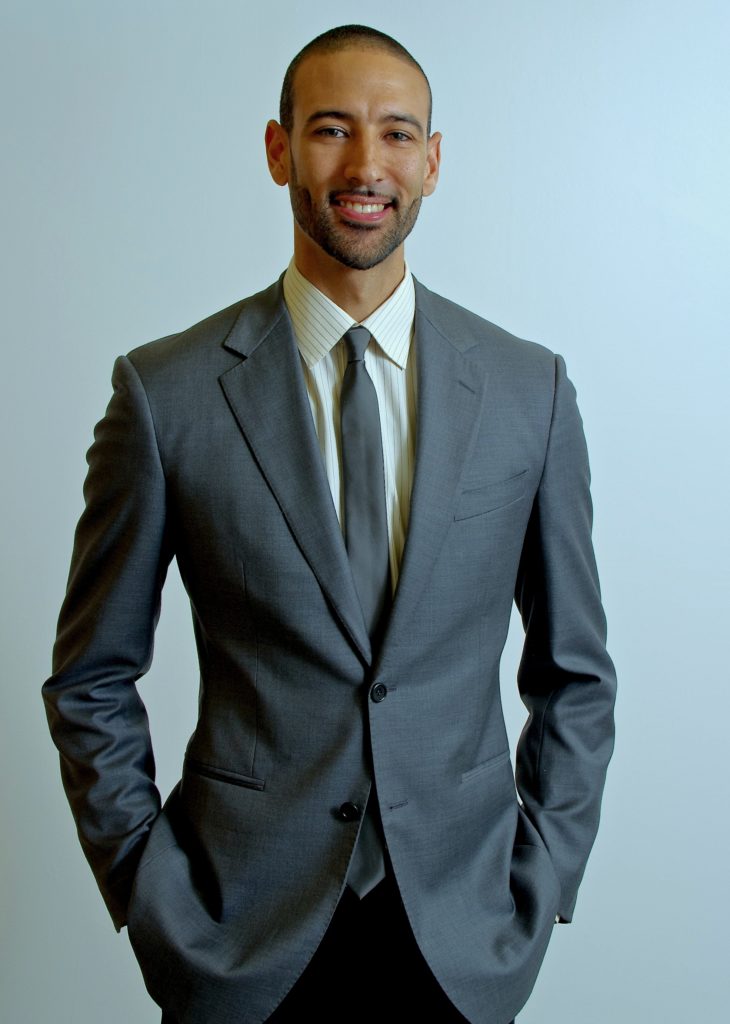
James E. Bartlett.
KWESI ABBENSETTS
James E. Bartlett – Museum of Contemporary African Diasporan Arts
New York
Age 30—served 2012 to 2018
Six years after cofounding a creative consulting agency called MVMT, James E. Bartlett became executive director of MoCADA in the Brooklyn neighborhood of Fort Greene. In that role, he completed a capital campaign and grew MoCADA’s Soul of Brooklyn initiative, which fosters collaborations between African diaspora arts organizations by way of programming at block parties and festivals. He currently works as the founding partner of an art investment fund called OpenArt.
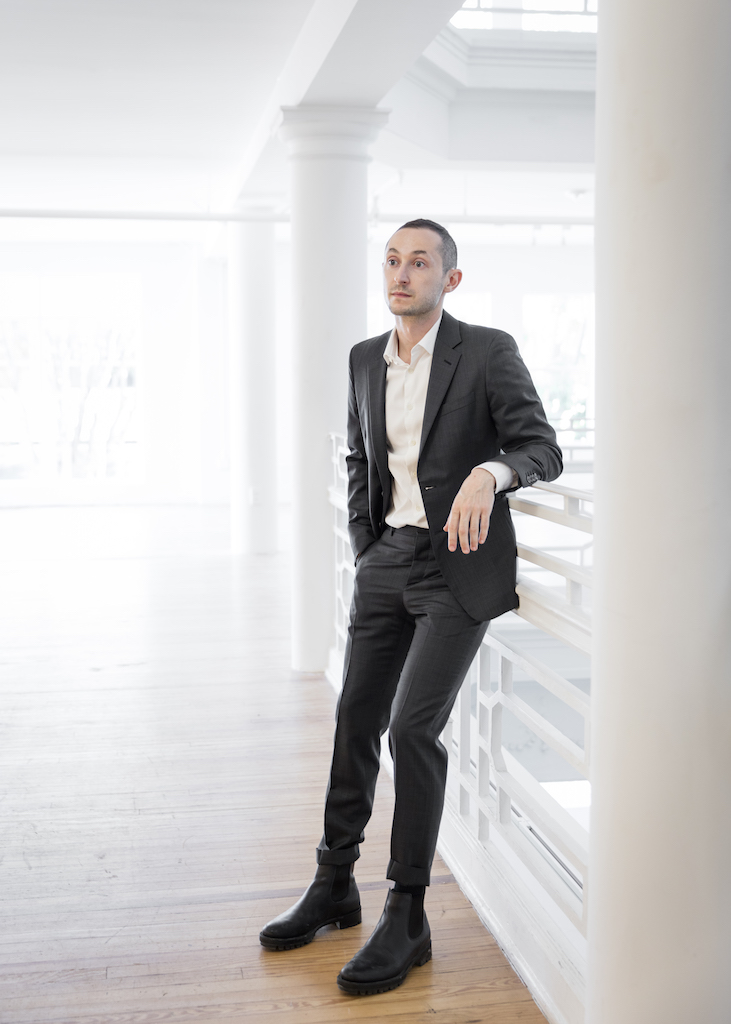
Alex Gartenfeld.
SILVIA ROS/COURTESY ICA MIAMI
Alex Gartenfeld – Institute of Contemporary Art in Miami
Miami, Florida
Age 31—served 2018 to present
Alex Gartenfeld entered the curatorial field while living in New York, running the now-shuttered West Street Gallery and Three’s Company out of apartments and working with artists like Ian Cheng, Asher Penn, Tobias Kaspar, and others. He also curated exhibitions at enterprises like Ohwow in Los Angeles and Team Gallery in New York early in his career. He joined the Institute of Contemporary Art in Miami in 2014, when the museum was still operating in temporary spaces, and he has held a number of titles, including curator, interim director, deputy director, and chief curator, at the institution. In 2018, when Ellen Salpeter stepped down from her post as director of the ICA Miami, Gartenfeld took the helm as artistic director. That same year, Gartenfeld served as a curator for the fourth edition of the New Museum Triennial in New York. “To be quite honest, I’m not a big fan of the idea of an artistic director,” Gartenfeld has said of his curatorial and directorial responsibilities. “I actually think both jobs are complex. It just so happens, that my job with this institution is somewhat unique and I appreciate it, so that happens to be my current title.” At the ICA Miami, Gartenfeld has spearheaded the development of the museum’s exhibition program and curated presentations of work by Ida Applebroog, Thomas Bayrle, Larry Bell, Judy Chicago, Pedro Reyes, Donald Judd, Hélio Oiticica, Senga Nengudi, and more artists.
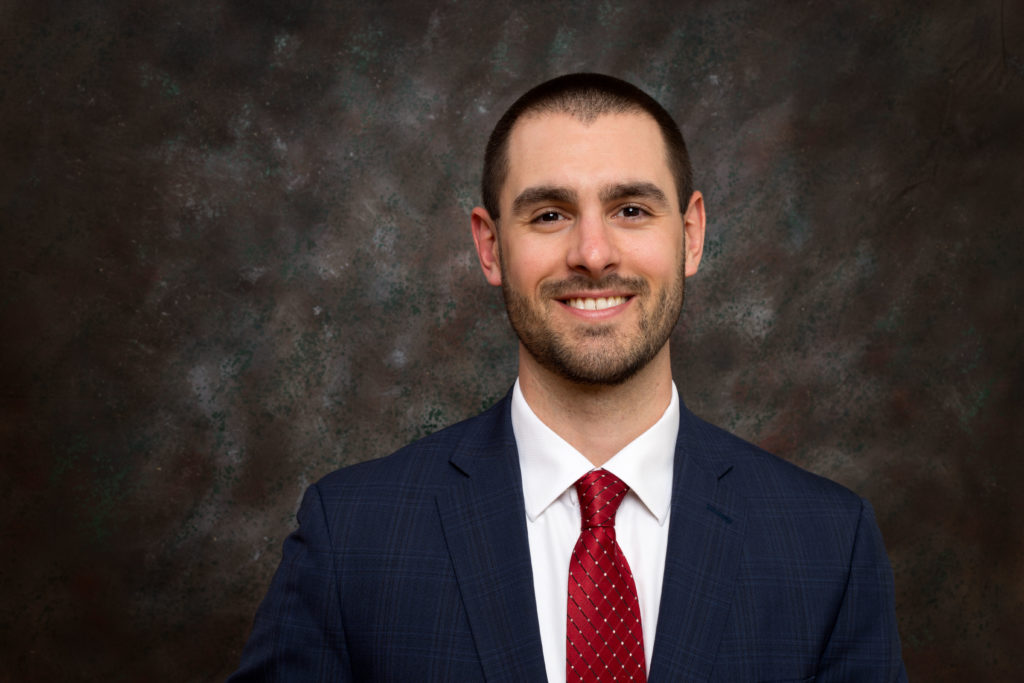
Joshua Helmer.
COURTESY ERIE ART MUSEUM
Joshua Helmer – Erie Art Museum
Erie, Pennsylvania
Age 29—served 2018 to present
Having previously worked as assistant director for interpretation at the Philadelphia Museum of Art, Joshua Helmer headed to the northwest corner of Pennsylvania to take the lead at the Erie Art Museum last spring. Since joining the institution, Helmer has focused on accessibility and membership growth, and one of his goals for 2020 is to increase engagement with local elementary schools. In January 2019, the museum sold 120 objects at auction as part of a deaccessioning effort contested by John Vanco, former director of the Erie Art Museum.
[ad_2]
Source link

